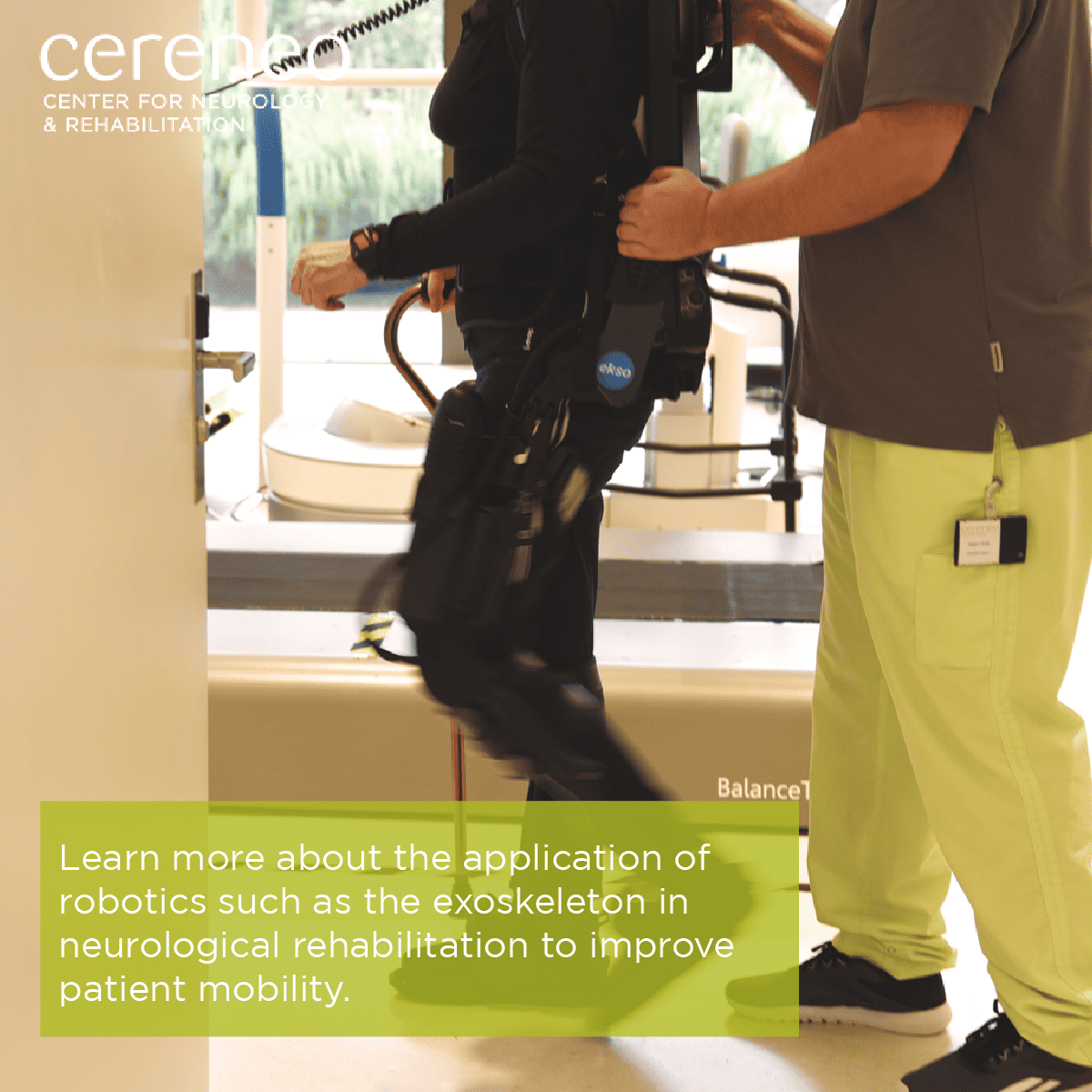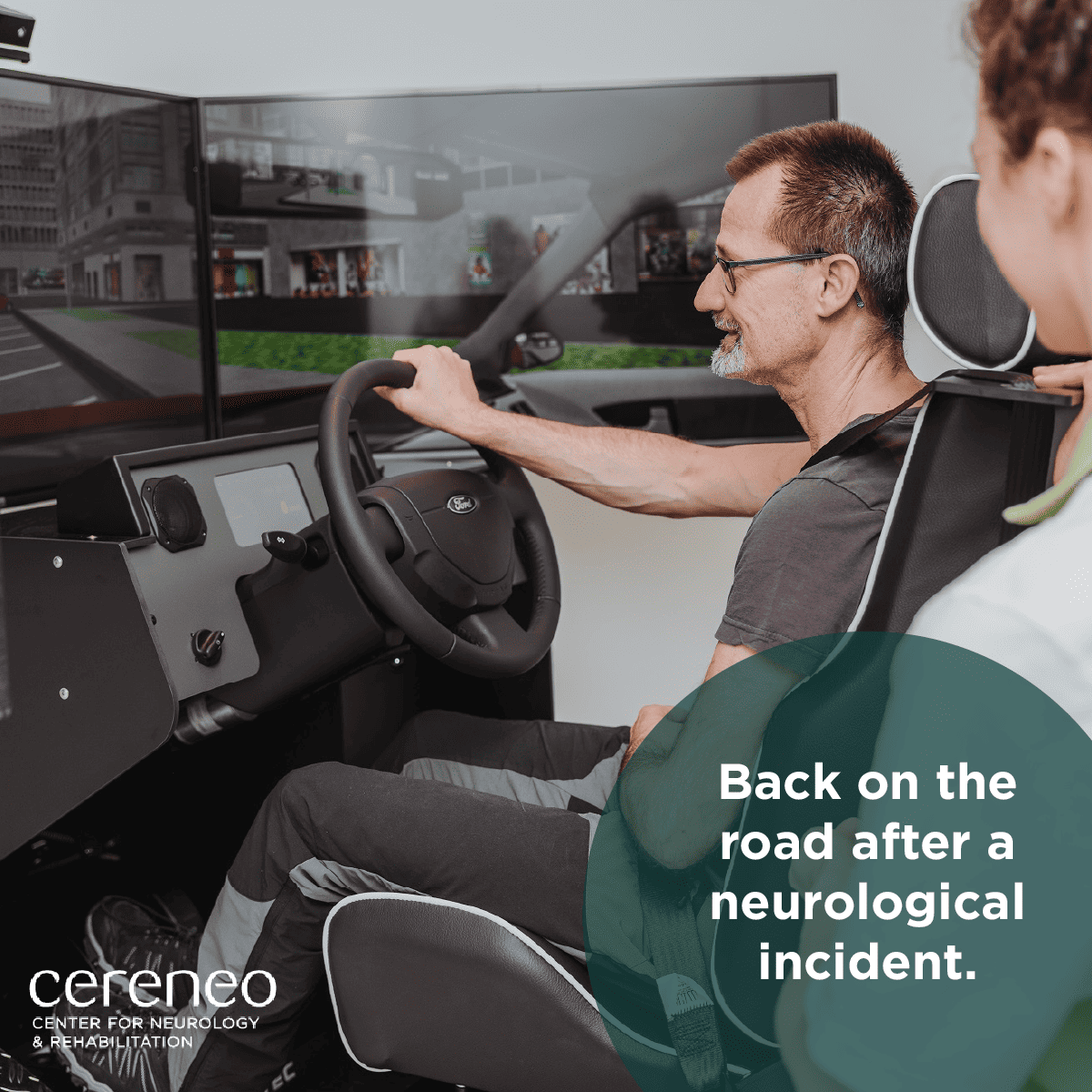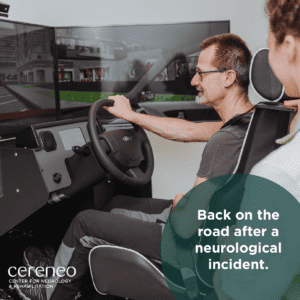The Exoskeleton is a wearable robotic suit designed to pave the way back to mobility for people with gait disabilities. An advanced device worn externally on the body, the exoskeleton is designed not only to mimic the natural gait pattern, but also to actively promote it. Through a sophisticated system of motors, sensors and advanced software, the exoskeleton enables users to stand upright and walk. It senses the user’s intentions and supports their movements in real time, providing a significant increase in mobility, balance and independence for people with limited walking ability.
In our clinic, the robotic device is part of the therapy program for patients with various neurological conditions. One example of the use of robotics is in the treatment of multiple sclerosis (MS). MS is a chronic disease of the central nervous system that causes a variety of physical and neurological symptoms, including significant loss of mobility.
Our patient, Mrs. Ramming, came to us with the goal of improving her walking ability and overall quality of life. Her MS-related deficits included difficulties with walking, limited standing stability, and generally reduced motor function.
Therapy Goals and Decision-Making Process
The decision to include Mrs. Ramming in the exoskeleton training program was based on a detailed analysis of her individual needs and therapy potential, which was discussed in our interdisciplinary team (IPK). The exoskeleton was not only intended to help her regain her ability to walk, but also to improve her balance and posture.
Mrs. Ramming approached the prospect of using the exoskeleton with determination and optimism. Her openness to innovative therapies was reflected in her positive attitude.
Initial Training Sessions and Adjustment
The initial training sessions with the exoskeleton were a change for Mrs Ramming, as she was used to walking in a crooked position. The direct correction of her posture by the exoskeleton led to an unusual perception of her body balance. Despite the challenges, she found the support provided by the exoskeleton to be positive, especially as she felt significant muscle activity after the training sessions. Over time and with more training sessions, Mrs. Ramming became accustomed to the exoskeleton. She reported increased safety and comfort when walking.
New Understanding of the complexity of gait rehabilitation
During her exoskeleton training, Mrs. Ramming gained deep insight into the complexity of gait rehabilitation. She realized that improving her gait goes far beyond the « simple ability to walk again ». She understood that a variety of factors such as balance, body sensation, gait pattern and walking speed were essential for an effective and sustainable improvement in her mobility. These insights changed her perspective on the rehabilitation process and motivated her to work further on the different aspects of her gait. Through targeted training with the exoskeleton, Mrs. Ramming was able to not only improve her physical strength and endurance, but also gain a better understanding of the nuances of her body sensation and movement patterns.










